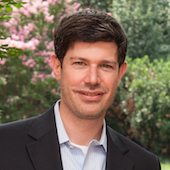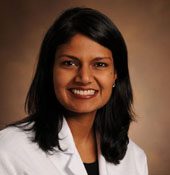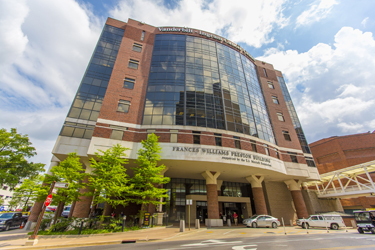Rick Abramson, M.D., has always enjoyed building new programs in creative ways.

The Harvard Medical School graduate spent the early part of his career in health care policy and management consulting, seeking new approaches for bringing clinical perspectives and paradigms into systems. As a White House policy analyst, he led a novel initiative exploring the use of clinical pathways to promote cost savings and quality improvement for Medicare. As an associate with McKinsey and Company, he developed new models to help pharmaceutical companies prioritize their research and development pipelines.
Later, after completing radiology training at the University of Pennsylvania and Johns Hopkins University, Abramson moved to Zurich, Switzerland, and helped pioneer the field of international teleradiology, interpreting emergency and trauma scans from U.S. hospitals sent to him over the internet. He went on to co-found a consulting firm dedicated to aligning radiology groups with hospitals and health systems.
Now, as the Department of Radiology’s first Vice Chair for Innovation, Abramson is again engaged in creative program development.
“I am honored to be asked to help build an innovation program within the Department of Radiology,” Abramson said. “I look forward to developing this resource as an important component of our long-term strategic plan.”
Abramson was recruited to VUMC in 2011 in a joint effort by the Department of Radiology, the Vanderbilt University Institute of Imaging Science (VUIIS), and the Vanderbilt-Ingram Cancer Center (VICC). He spent his first few years at VUMC collaborating with VUIIS basic scientists and VICC oncologist-researchers to develop VUMC’s cancer imaging infrastructure. Abramson is the principal investigator on a multi-site NIH U01 grant evaluating quantitative MRI biomarkers for solid tumor response assessment. He also built and directs the Cancer Imaging Support Laboratory, which performs tumor measurements for VICC clinical trials, and the Clinical Trials Radiology Support Core, which has streamlined the billing and compliance workflow around VUMC clinical trials imaging.
“Dr. Abramson is a natural innovator who has long been working at the intersection of our clinical, research and learning missions,” said Reed Omary, M.D., M.S., Carol D. and Henry P. Pendergrass Professor and Chair of the Department of Radiology and Radiological Sciences. “We are thrilled that Dr. Abramson — one of the most creative, forward-thinking leaders in Radiology — will be our first Vice Chair for Innovation and help transform the department and Medical Center.”
In his new position, Dr. Abramson is building a business incubator program to support the development and commercialization of creative technology solutions. The program, called Radx, seeks to foster a culture of entrepreneurship by providing resources to innovators in the Department of Radiology and beyond.
Radx’s inaugural project is an Innovation Challenge co-sponsored with the Center for Technology Transfer and Commercialization (CTTC) and the Wond’ry, with funding support from the Evelyn Selby Stead Fund for Innovation. Teams enrolled in the Challenge are currently competing to devise creative solutions to unmet needs in health care. The teams will present their ideas to a panel of judges at a live pitch event scheduled for May 25. The two winning teams will each receive $10,000 to support further business development.
The Radx Innovation Challenge is serving not only as Radx’s first flagship initiative, but also as a demonstration project for the “Amplify Innovation” pillar of VUMC’s Strategic Direction effort.
“Our department is emphasizing innovation as a strategic objective because we seek new ways of maintaining our relevance, diversifying our scope, strengthening our brand identity, and enhancing our impact,” Abramson said. “These are broadly shared objectives across the Medical Center. We look forward to communicating our lessons learned with the goal of advancing our overall institutional mission.”















